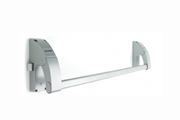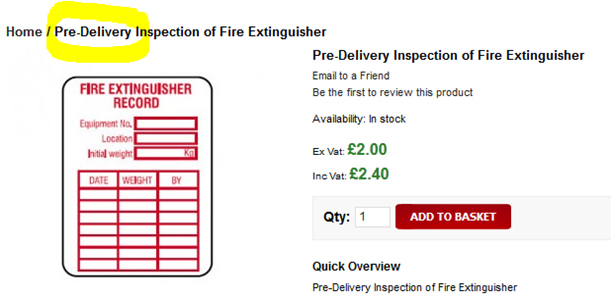Wednesday 23rd January 2013
One of the speakers at the launch of Carbon Monoxide Awareness Week at the House of Lords in November 2012 was Dr Steven White. He gave a very interesting presentation on the long-term effects of carbon monoxide poisoning, some of which are only recently being fully realised.
Dr White has co-written a factsheet that is published on the website of Headway, the charity that works to improve life after brain injury. With Headway’s permission we reproduce a short extract here.
Like other types of anoxic brain injury, acute CO poisoning may lead to quite severe long-term neurological problems, with disturbances in memory, language, cognition, mood and behaviour. The damage to the basal ganglia, which is a particular feature of CO poisoning, may lead to a movement disorder resembling Parkinson’s disease.
An unusual feature of acute CO poisoning is the delayed deterioration in neurological condition which may be seen in some cases, occurring anything from a few days to as long as five to six weeks after the initial exposure. The reason for this is not entirely clear, but changes in the white matter of the brain seem to be involved. It has been suggested that these may result from demyelination, in which there is loss of the fatty, insulating myelin sheath of the nerve axons, therefore impairing their ability to conduct electrical nerve impulses.
Chronic CO exposure
Chronic (persistent and long-term) exposure to lower levels of CO, as can occur with faulty domestic boilers, may go unrecognised. The symptoms include milder versions of those seen in acute CO poisoning, with headache, nausea, dizziness, light-headedness, fatigue and sleepiness, difficulty concentrating and memory problems, as well as changes in mood.
People may be aware that something is wrong, but be unable to identify exactly what is the matter, or may attribute the problems to overwork, stress or depression. If symptoms disappear while away at work, reappearing on returning home, or if other people in the same premises develop similar symptoms, it may become more obvious that there is an environmental cause.
Although most people seem to recover following chronic low level CO exposure when the source is removed, it can also lead to anoxic brain injury. There have been some documented cases of subtle Magnetic Resonance Imaging (MRI) abnormalities and long-term neuropsychological effects.
Treatment of CO poisoning
Treatment of acute exposure to CO involves immediate removal from the source of the poisoning and administration of 100% oxygen, together with general supportive medical care.
Hyperbaric oxygen therapy is sometimes advocated for severe cases of CO poisoning and involves giving pure oxygen at increased pressures in a hyperbaric chamber. It has been suggested that this may improve the long-term neurological outcome, although it remains controversial. Hyperbaric oxygen therapy is a specialised technique, which is only available in a few centres. It may also be associated with complications of its own and it is not used routinely.
To read the full factsheet go here
More information about carbon monoxide poisoning and detection can be found on our websites.
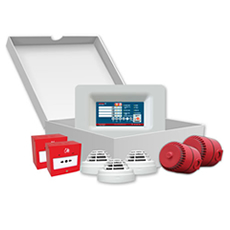 BS 5839 Part 1 ‘Fire detection and fire alarm systems for buildings. Code of practice for design, installation, commissioning and maintenance of systems in non-domestic premises‘ is the key Standard for commercial fire alarm systems with central control panels. It helps customers and installers to specify, design, install and maintain fire alarm systems.
BS 5839 Part 1 ‘Fire detection and fire alarm systems for buildings. Code of practice for design, installation, commissioning and maintenance of systems in non-domestic premises‘ is the key Standard for commercial fire alarm systems with central control panels. It helps customers and installers to specify, design, install and maintain fire alarm systems.
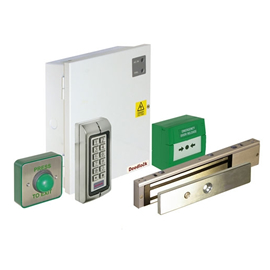 Magnetic locks use a strong, electrically powered electromagnet to hold the door closed. If the power fails, or is interrupted by a fire alarm signal, the magnet loses power and releases the door which can then be opened. The door can usually only be released by pressing a button on the INSIDE of the building, although external keypad overrides are available.
Magnetic locks use a strong, electrically powered electromagnet to hold the door closed. If the power fails, or is interrupted by a fire alarm signal, the magnet loses power and releases the door which can then be opened. The door can usually only be released by pressing a button on the INSIDE of the building, although external keypad overrides are available.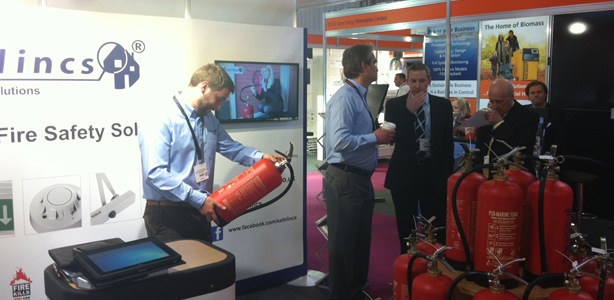

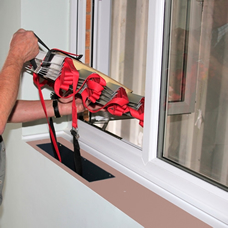 To allow quick and safe escape from the upper floors, EvacSill ladders were installed.
To allow quick and safe escape from the upper floors, EvacSill ladders were installed.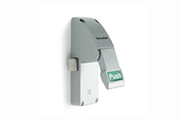 Generally installed in non-public areas, emergency latches and bolts are used where escape routes are well known by the building’s occupants and the exit hardware is familiar. Because the area is familiar to the building’s occupants, these emergency exit devices usually consist of a push pad with either a rim latch, or a combination of latch and shoot bolt for additional security. Where this type of
Generally installed in non-public areas, emergency latches and bolts are used where escape routes are well known by the building’s occupants and the exit hardware is familiar. Because the area is familiar to the building’s occupants, these emergency exit devices usually consist of a push pad with either a rim latch, or a combination of latch and shoot bolt for additional security. Where this type of 